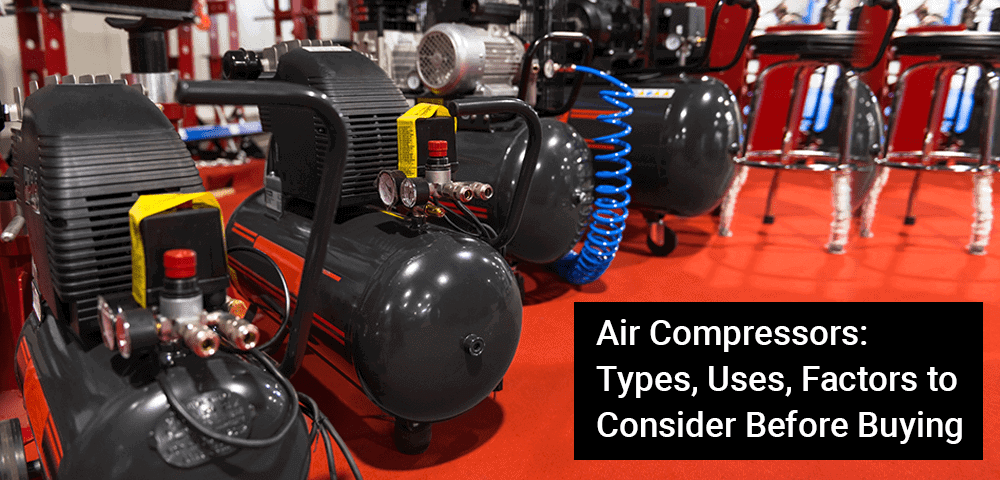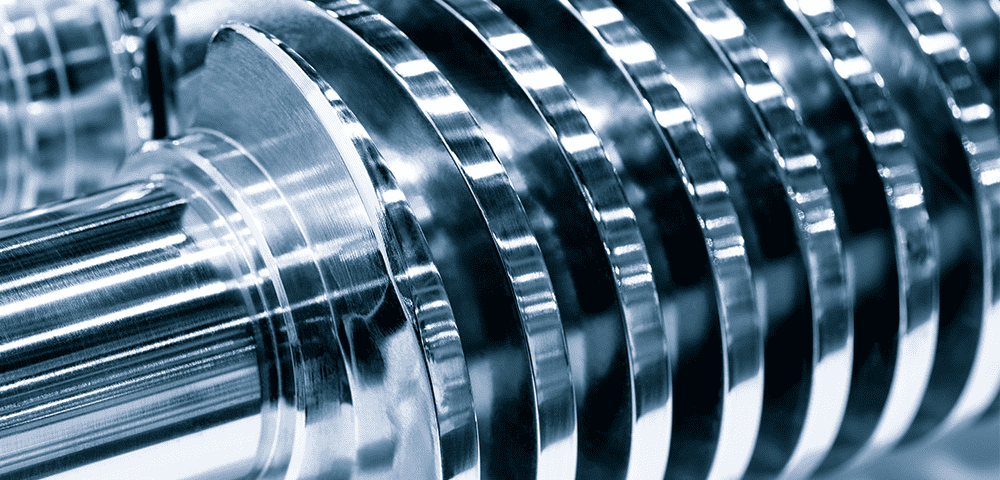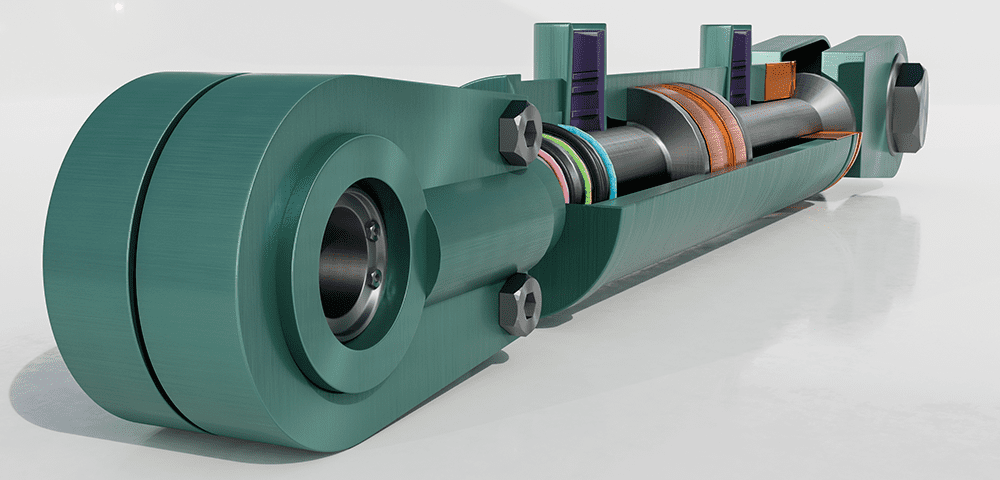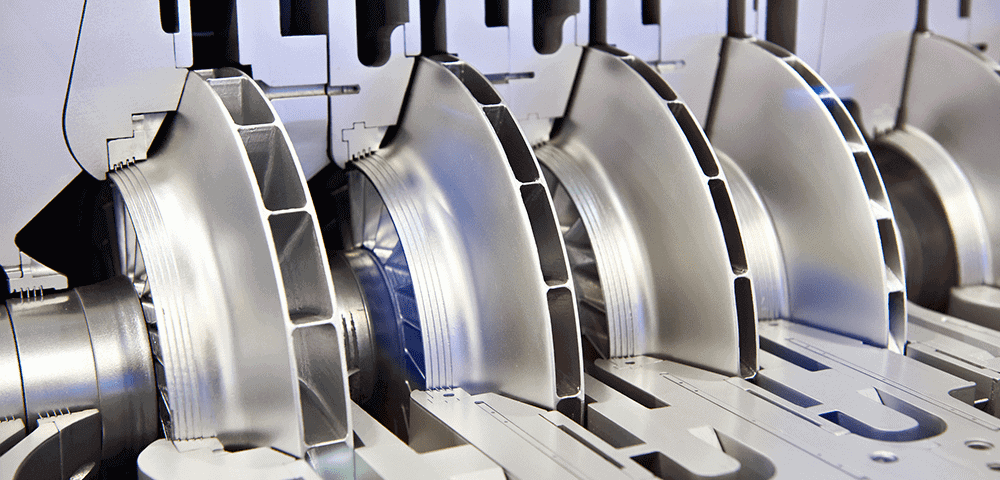
Air compressors are regarded as some of the most important tools in any rental or construction business. Which is why you should understand that there are different types of air compressors each comes with its own set of unique applications essential for your business growth.
Air compressors are powerful machines capable of powering a wide range of other tools, ranging from pneumatic wrenches to nailers, air sprayers to paint machines, and more. As already shared, different air compressor types will feature different applications across multiple industry verticles. Therefore, it is imperative for you to understand classification of air compressors based on their applications.
A] What Is A Piston Compressor?
To get an insight into the various types of air compressors, it is important to understand the machine primarily. An air compressor is a type of mechanical device that will intake air at low pressure or atmospheric pressure while converting the same into high pressure air.
Some of the common uses of compressed air are cleaning dust out of cupboards or cabins, powering pneumatic tools, filling up air in tires, operation of brakes in large-sized vehicles like trucks & buses, compression of refrigerants in refrigerator and HVAC systems, and more.
B] Tips To Choosing The Right Piston Compressor
There are several ways to classify air compressors based on the different uses of air compressors. You can classify air compressors on some common grounds like pressure ratio, pressure ranges, the overall design, capacity, and others.
1. Rotary Screw Compressors
These types of air compressors feature two meshed helical screws with minimal clearance between them. This helps in pushing the air down through a continuously shrinking space. This helps in raising the overall pressure during the compression process. The screws of the device are positioned in opposite directions with the help of two shafts. The motion of the shafts and screws are effectively adjusted with the help of timing gears that are attached to the starting points of the respective shafts.
Rotary screw compressors can be used for minimally low demands, almost around 25 HP to even higher demands of up to 600 HP as provided by some of the contemporary designs. While you can easily come across oil-free designs of the machine, still in most cases, it is the presence of oil that is helpful in lubricating, sealing, and hearing absorption from the screw compressor that has been oil-injected. Still, it is important to note that the compressed air that exists in the machine will always be oil-free. Therefore, it can be effectively used in various other components.
In the domain of rotary screw compressors, there is the advent of an all-new model known as Conical Screw Air Compressors. This variant of air compressor depicts a conical-shaped spiral extension of the gerotor.
When compared with other types of air compressors, rotary air compressors tend to create less noise because of the continuous supply of compressed air. They are also highly energy-efficient while being capable of delivering high pressure ratios as well. You can expect air at a lower temperature that exits out of the machine.
Learn the workings of a screw air compressor with our informative guide: How a Screw Air Compressor Operates
2. Reciprocating Air Compressors
These air compressors feature the mechanism in which a piston will go up & down the cylindrical volume for sucking air inside the device’s chamber while compressing it. These compressors are divided into either double-acting compressors or single-acting compressors. While the overall design of reciprocating air compressors is quite advanced, still these are rarely used in different industries. It is because of the overall complexity of its operations and the frequent requirement of maintenance.3. Oil-free Compressors
Oil-free compressors do not have any oil in the respective compression chamber. Rather than this design, these compressors feature built-in, long-lasting alternative modes of lubrication on the respective moving parts. Due to this, Oil free reciprocating Air Compressors are capable of producing compressed air without the involvement of any hazardous oil in the mechanism.
In most cases, centrifugal air compressors tend to be oil free. There is the presence of oil-free reciprocating and rotary screw compressors as well. However, these designs are slightly expensive. On the plus side, these air compressors are known to compress and produce clean air while being capable of working at reduced noise levels and lower temperatures.
These benefits make oil-free compressors ideal for construction in eco-friendly worksites or busy areas. Oil-free air compressors are also effectively-suited for ensuring continuous operation as they require minimal upkeep. Still, over time, they might need additional work to last longer.
4. Centrifugal Air Compressors
Unlike other variants, centrifugal compressors tend to be dynamic. This implies that they are helpful in drawing air from the outside environment instead of using a closed air reserve. In a typical centrifugal air compression machine, the mechanism is possible with the help of a rotor, referred to as the impeller. It spins inside the cylinder to force air inside the device.
Most variants of centrifugal air compressors make use of multiple stages for increasing pressure while delivering more power. Multi-stage centrifugal compressors are helpful in delivering impressive horsepower, making them well-suited for powering heavy equipment. Like the functioning of rotary screw compressors, centrifugal compression machines are also capable of operating continuously. Therefore, they are effectively suited for longer jobs.
Centrifugal compressors are also regarded as cost-effective in comparison to other alternatives having a similar horsepower. However, their overall reliance on fast-moving parts makes them highly vulnerable to choking or stalling.



